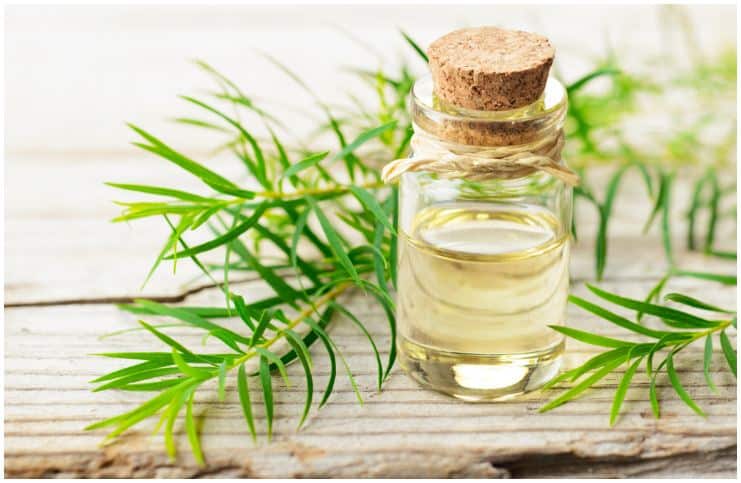Essential Oils For Nerve Damage:
Introduction
Nerve pain typically occurs due to damaged nerves that send false signals. Ultimately, this leads to chronic pain.
According to the National Institute of Neurological Disorders and Stroke, about 20 million people in the United States suffer from peripheral neuropathy, also known as peripheral nerve damage.
The peripheral nervous system constitutes the network of nerves that are found outside the spinal cord and brain (the central nervous system).
This condition can result from:
- bone marrow disorders;
- rheumatoid arthritis;
- chronic kidney disease;
- lupus;
- type 2 diabetes mellitus;
- poor blood flow to the legs;
- exposure to toxins, especially heavy metals, like – lead;
- tumors;
- an underactive thyroid gland;
- low levels of B-complex vitamins, such as – B1, B6, B12;
- infections such as hepatitis C, shingles, HIV/AIDS.
Common symptoms may include:
- excessive sweating;
- sharp, stabbing pains;
- diarrhea;
- digestive difficulty;
- constipation;
- sexual dysfunction, particularly in men;
- thinning of the skin;
- a drop in blood pressure;
- frequently dropping things from your hands;
- heavy feeling in the legs and arms;
- numbness in the feet or hands.
Here is a list of 10 essential oils for nerve damage (aka peripheral neuropathy):
#1 Chamomile
The main components of this essential oil include – b-pinene, a-pinene, sabinene, camphene, myrcene, 1,8-cineole, y-terpinene, caryophyllene, butyl angelate, and propyl angelate.
It has antispasmodic and analgesic properties. Hence, it is very effective in relieving muscle spasms and muscle pain. Also, it has strong anti-inflammatory properties and can reduce inflammation caused by psoriasis, eczema, skin rashes, dermatitis, and other inflammatory skin disorders.
Aside from its soothing attributes, this essential oil may also help boost healthy immune system function when ingested orally. To reap the full immune-supporting benefits of this oil, you can add it to a hot beverage or water in order to take the Chamomile essential oil internally.
#2 Lavender
Individuals struggling with migraine headaches had a considerable reduction in pain when they inhaled lavender essential oil scents for at least twenty minutes, according to a 2012 study issued in the European Journal of Neurology.
Moreover, lavender essential oil is good for problems, like – asthma, bronchitis, laryngitis, colds, halitosis, whooping cough, and throat infections, plus, it helps the digestive system deal with nausea, colic, flatulence, and vomiting.
When diluted, it is beneficial for emotional issues of abandonment as well as it can calm nerves. To use it, spray or rub on the forehead, temples, hands, back, or feet to relieve pain related to peripheral neuropathy.
#3 Peppermint
The principal components of peppermint oil include – menthol, menthone, methyl esters, and menthofuran. According to recent research, peppermint essential oil can help with symptoms of nerve damage. Also, it may help prevent spasms in the gastrointestinal tract caused by irritable bowel syndrome or barium enema.
In addition, this oil has a refreshing and cooling effect that will linger on the legs hours after the massage session is complete. Emotionally, it is stimulating and is an excellent choice for inclusion in blends intended to help boost stamina and alertness.
#4 Geranium
It has a variety of amazing characteristics. However, it is especially esteemed as a balancing oil since geranium is frequently used to help the human body balance its hormones.
The most important components of the geranium essential oil include – geraniol and citronellol. Other active constituents include – linalool, isomenthone, citronellyl formate, and nerol.
This essential oil helps to speed up the healing process of wounds, nerves, cuts, and incisions. In addition, it helps in fading the look of scars on the skin faster. Furthermore, it is popular among women because it is beneficial during menopause and menstruation.
#5 Tea tree
It is extracted from the leaves of Melaleuca alternifolia, a tree native to New South Wales and Queensland, Australia. This oil has antibacterial, anti-viral, and fungicidal attributes, which make it a good natural treatment of bladder infections and cystitis.
Tea tree essential oil has also been touted for its extremely potent antiseptic properties as well it can help people with peripheral nerve damage.
Tip – you should always dilute tea tree essential oil topically with a carrier oil, such as – coconut oil in a 1:1 ratio.
#6 Bergamot
It is produced from the cold- or hand-pressed rind of nearly ripe fruit of the bergamot tree from the Rutaceae family.
The chemical composition of Bergamot essential oil includes – alpha bergapten, alpha-pinene, limonene, alpha-terpineol, linalyl acetate, linalool, neryl acetate, nerol, geraniol, beta bisabolene, myrcene, and geraniol acetate.
This essential oil can be useful when battling a cough or a cold since it loosens mucus and phlegm in the respiratory tract. Also, bergamot oil can stimulate hormones, like – serotonin and dopamine, that create feelings of relaxation and sedation, thus, reducing the symptoms of peripheral nerve damage.
#7 Sandalwood
It is derived from the heartwood of the sandalwood, a hemiparasitic evergreen belonging to the Santalaceae family, which grows by joining the root system of other trees.
When applied to the skin, Sandalwood essential oil protects sores, wounds, pimples, and boils from becoming septic. Also, when ingested, this oil helps to protect internal injuries from infections.
Sandalwood essential oil is also relaxing when smelled, promoting a harmonious feeling, according to a 2006 study.
#8 Ginger
It is produced from the ginger root by oil distillation and has almost the same benefits as fresh ginger.
Typically, this oil can be used in formulations and blends intended to help improve circulation, especially for people with muscle pains and aches, arthritis, and nerve damage.
#9 Eucalyptus
Due to its potent anti-inflammatory and analgesic characteristics, Eucalyptus essential oil can be used for relieving nerve aches and pains and muscle pain.
It also has antiseptic and antimicrobial attributes that are useful in treating burns, wounds, abrasions, cuts, scrapes, and sores. More importantly, this oil is analgesic, and it is often recommended to people suffering from lumbago, rheumatism, sprained tendons and ligaments, fibrosis, stiff muscles, and nerve pain.
#10 Helichrysum
It contains naturally occurring nervine, a compound that regenerates and strengthens the nervous system. In addition, helichrysum essential oil contains phloroglucinols, acetophenones, and terpenoids — compounds with potent antifungal properties.
To use helichrysum essential oil, it is recommended to combine it with a carrier oil like jojoba or coconut oil and rub it on the affected area.
Note – this essential oil is safe to use for most individuals; however, since the oil is an anticoagulant, it is safer to avoid it if you are prone to internal hemorrhages or have recently undergone surgery.
Images credit – Shutterstock








Does anyone have trigeminal neuralgia and use essential oils. If so, is it ingested, drink as tea or apply topical.
Acupuncture-
There is a FB group for TN if you want to look at that, and also a page for TN and CBD oil use. The support groups on FB have been informative for me.